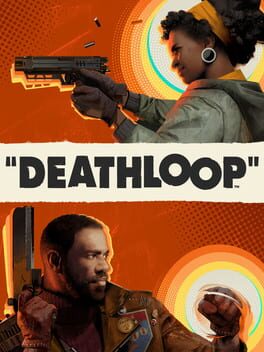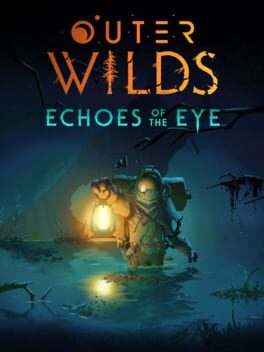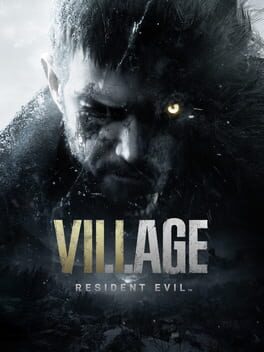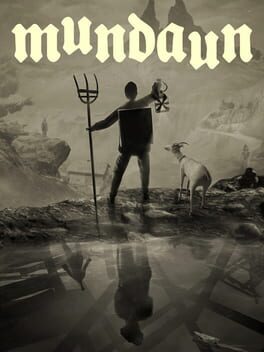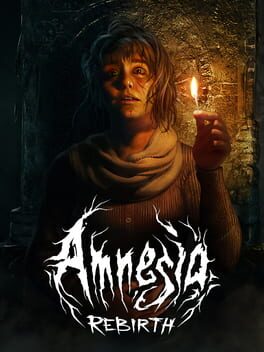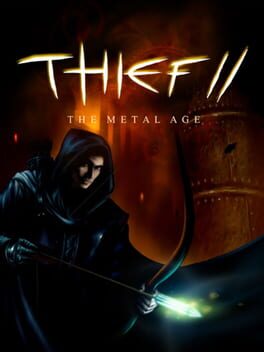2019
Feeling small, the weight of your body and cargo shifting moment to moment, you wander through landscapes with a real sense of scale and elemental menace. Marking out your favourite routes, you build up memories of the texture of the earth and the incline of the terrain. America has been swallowed by a rift in deep time, emerging as (Iceland?!) a volcanic wasteland haunted by the dead. Tethered to others via ghostly gestures and transient structures, every trip has an eerie loneliness that rises in waves.
The closer this gets to Metal Gear, the more it fumbles, especially with movement a little too clumsy for combat. Spectral and human entities are at their most affecting when glimpsed just out of sight or over the horizon, often throwing off your concentration for a moment, resulting in hilarious mistakes. The deliveries are (mostly) emptied out of significant narrative content or reward, a minimalism that just leaves you alone with the landscape.
The closer this gets to Metal Gear, the more it fumbles, especially with movement a little too clumsy for combat. Spectral and human entities are at their most affecting when glimpsed just out of sight or over the horizon, often throwing off your concentration for a moment, resulting in hilarious mistakes. The deliveries are (mostly) emptied out of significant narrative content or reward, a minimalism that just leaves you alone with the landscape.
2022
A lonely journey through ruins punctuated by dense trials in honeycombed dungeons. What (obviously) distinguishes this for me from previous Souls entries is the ability to stray from the Light of Grace and just wander through the vast overworld and navigate the winding geography in an almost frictionless manner, then return to the dungeons when I have recovered my courage (usually with the added warmth of a friend guiding or being guided through the labyrinths).
It isn’t really the bosses or combat that draws me to this series, but the perpetual sense of a larger world, of meaning and history, just beyond your grasp - a sense of mystery evocative of Gene Wolfe’s New Sun or Harrison’s Viriconium. This isn’t a living world in a Skyrim sense - there are few areas that evoke a bustling town or real city, and like Souls games before, this feels like playing through a myth, with unusual characters guiding you, withholding information from you, tricking you.
If you are fatigued by From's work, this may not be the one to bring you back. Occasional repetition of bosses can at times reveal a game outreaching its ambition, of assets stretched too far, but so many encounters constantly wake you up and undermine your sense of how the world works. The map grows, above and below ground, and never offers a complete image of the world and its secrets.
It isn’t really the bosses or combat that draws me to this series, but the perpetual sense of a larger world, of meaning and history, just beyond your grasp - a sense of mystery evocative of Gene Wolfe’s New Sun or Harrison’s Viriconium. This isn’t a living world in a Skyrim sense - there are few areas that evoke a bustling town or real city, and like Souls games before, this feels like playing through a myth, with unusual characters guiding you, withholding information from you, tricking you.
If you are fatigued by From's work, this may not be the one to bring you back. Occasional repetition of bosses can at times reveal a game outreaching its ambition, of assets stretched too far, but so many encounters constantly wake you up and undermine your sense of how the world works. The map grows, above and below ground, and never offers a complete image of the world and its secrets.
2021
This isn’t the clockwork worlds of Outer Wilds or Hitman. Major decisions don’t so much as ripple through the day, but update the mind-map buried in the UI. The smooth movement and honeycombed worlds are occasionally up there with Dishonored, but the enforced repetition renders them lifeless after a few loops, as you slowly unpack how each location is little more than shifting closed off areas, altered set-dressing and enemy placement.
Certain events (the party) beg to be explored through some form of social stealth - but your main means of interacting with the world is a gun - so you just linger in the attic, looking for an opportunity. Puzzles also feel arbitrary - as Colt figures out nearly everything before you do & the information gathered often comes down to hacking door codes and computer terminals.
The sharp contrast between historical neighbourhoods and the decadent pop-facades echo Bioshock Infinite’s automatons rather than Dishonored’s lived in world. Targets are kept at a distance and from what little I learned of them through the playful but often obnoxious writing, I ultimately couldn’t find a reason to care.
Certain events (the party) beg to be explored through some form of social stealth - but your main means of interacting with the world is a gun - so you just linger in the attic, looking for an opportunity. Puzzles also feel arbitrary - as Colt figures out nearly everything before you do & the information gathered often comes down to hacking door codes and computer terminals.
The sharp contrast between historical neighbourhoods and the decadent pop-facades echo Bioshock Infinite’s automatons rather than Dishonored’s lived in world. Targets are kept at a distance and from what little I learned of them through the playful but often obnoxious writing, I ultimately couldn’t find a reason to care.
Maintains the sublime terror of embodying a fragile being at the whims of an uncaring universe (and a sense of scale only achieved elsewhere by Shadow of the Colossus or Subnautica), especially in the central sequence evoking a visceral moment in Clarke’s Rendezvous with Rama.
I did find later sections incredibly opaque, as my idiot brain couldn’t parse where and when I was, let alone solve the core puzzles. Mechanics are introduced generously, but it is often unclear when and why to use them (especially compared to the stark, illuminating reveals of the main game).
Otherwise this is still the same alluring hostile universe, filled with brief moments of warmth, and one of the only games that feels this way.
I did find later sections incredibly opaque, as my idiot brain couldn’t parse where and when I was, let alone solve the core puzzles. Mechanics are introduced generously, but it is often unclear when and why to use them (especially compared to the stark, illuminating reveals of the main game).
Otherwise this is still the same alluring hostile universe, filled with brief moments of warmth, and one of the only games that feels this way.
Village is a chaotic melding of its past entries, but there is a much stronger sense of pacing and flow here than in 7 - including constant reorientation of what spaces are safe and a more expansive, looping geography. The RE engine (reach for the moon engine?!) has such a beautiful physicality to it, with indulgent texture work & photogrammetry so lifelike that at times it feels like a flimsy/over adorned set of a Hammer film - further layers of artifice mirroring the genre mashup at its core.
A sense of long term consequences haunted earlier RE titles and this is the main area I found Village is lacking. Boss enemies in Village do little to shift how you play (eg. the Licker in RE2 limited when you made noise, Crimson Heads in the REmake forced you to consider returning to cleared areas). As this entry shows they are gesturing to their past confidently, I hope they consider returning to some of these dynamics in the future.
A sense of long term consequences haunted earlier RE titles and this is the main area I found Village is lacking. Boss enemies in Village do little to shift how you play (eg. the Licker in RE2 limited when you made noise, Crimson Heads in the REmake forced you to consider returning to cleared areas). As this entry shows they are gesturing to their past confidently, I hope they consider returning to some of these dynamics in the future.
2021
Munduan feels as if it is held together by tape and will unravel at any moment. Movement and animations stop and start with sharp twitches and weapons shiver in your hands. The hand-drawn textures wrap around the low-poly world with uncomfortable tension, like crude sketches over cardboard backdrops.
Exploration of the world evokes Highway 17 meets Resident Evil. Instead of a buggy you commandeer a janky old harvester and instead of safe rooms you take refuge in safe houses, welcoming spaces for brewing coffee and tending to your journal. Creatures wander the landscape in a quaint manner, almost like mobs populating 90s platformers (recalling my childhood fear of evading the enemies of Croc 2 or Gex).
Supernatural events take shape in the world in the form of optical illusions, animated shadows and altered reflections, taking a similar approach to the hard artificial limitations of the artwork. The sound design gives texture to every object in your inventory, and the soundscape of the mountains is full of ambient winds and eerie stillness. “Close up sounds” (according to their sound designer) bring to life paintings and photos(?) found in the world, hinting at muffled voices from the past.
Exploration of the world evokes Highway 17 meets Resident Evil. Instead of a buggy you commandeer a janky old harvester and instead of safe rooms you take refuge in safe houses, welcoming spaces for brewing coffee and tending to your journal. Creatures wander the landscape in a quaint manner, almost like mobs populating 90s platformers (recalling my childhood fear of evading the enemies of Croc 2 or Gex).
Supernatural events take shape in the world in the form of optical illusions, animated shadows and altered reflections, taking a similar approach to the hard artificial limitations of the artwork. The sound design gives texture to every object in your inventory, and the soundscape of the mountains is full of ambient winds and eerie stillness. “Close up sounds” (according to their sound designer) bring to life paintings and photos(?) found in the world, hinting at muffled voices from the past.
2020
Early in the game, Rebirth takes you through a free-roam fort occupied by a single creature that, while very scripted, haunts you as you venture from blinding desert light into dark structures around a central courtyard - almost Resident Evil like in nature. Unfortunately nothing else really lived up to this sequence for me.
Frictional’s Thomas Grip describes their ‘SSM framework’ approach to horror games as the overlap and interaction between systems, story, and the player’s ensuing mental model of these. Via removal of any ‘fun’ combat interactions, randomizing difficulty after each death, limited inventory management and prioritizing narrative, this has worked well for them so far (and unfortunately spawned clones that didn’t do the formula justice). After SOMA (which I found to be their strongest work to date) Amnesia Rebirth dwindles in repetitive monster encounters and a world always in movement, that constantly discards any sense of place or natural geography. Upon this they've layered a heavily scripted sentimental narrative that suffocates the gameplay - with Tasi’s constant comments, taking away control of the player and often placing full-screen illustrated flashbacks over your view.
I really wanted to immerse myself in the events occurring in the present, which is something SOMA succeeded at. Instead the focus was on collecting matches, hiding in monotonous caves and enduring your screen flashing shit at you as you lose your sanity, while the narrative slowly crept in, gnawing away in the background. The finale was great though, allowing you to make choices entirely through gameplay, that highlights how most games only allow for choices to be made through dialogue selection. Hopefully this will be further fleshed-out in future (though I understand the consequences this would have on budget/labour etc.).
Frictional’s Thomas Grip describes their ‘SSM framework’ approach to horror games as the overlap and interaction between systems, story, and the player’s ensuing mental model of these. Via removal of any ‘fun’ combat interactions, randomizing difficulty after each death, limited inventory management and prioritizing narrative, this has worked well for them so far (and unfortunately spawned clones that didn’t do the formula justice). After SOMA (which I found to be their strongest work to date) Amnesia Rebirth dwindles in repetitive monster encounters and a world always in movement, that constantly discards any sense of place or natural geography. Upon this they've layered a heavily scripted sentimental narrative that suffocates the gameplay - with Tasi’s constant comments, taking away control of the player and often placing full-screen illustrated flashbacks over your view.
I really wanted to immerse myself in the events occurring in the present, which is something SOMA succeeded at. Instead the focus was on collecting matches, hiding in monotonous caves and enduring your screen flashing shit at you as you lose your sanity, while the narrative slowly crept in, gnawing away in the background. The finale was great though, allowing you to make choices entirely through gameplay, that highlights how most games only allow for choices to be made through dialogue selection. Hopefully this will be further fleshed-out in future (though I understand the consequences this would have on budget/labour etc.).
Thief II's sound design creates such a strong sense of space that despite the blocky geometry and stark baked lighting, this really holds up in 2021. Coming from Dishonored, which was fluid & freeform, Thief initially alienated me with its focus on moment to moment movement across mere inches of floorboards, stone & carpet. Each level could be its own world and sneaking through hidden passages, between shadows over soft & hard surfaces has a beautiful rhythm.
The houses drew me in the most, especially the labyrinthine mansions with self-contained stories hidden in basements and attics, each mostly staffed by a bunch of drunk idiots. There is lore here that I couldn't follow and a vague plot I didn't care for, but the brief encounter with the robotic child was the most disquieting shit in recent memory.
Thief is a cat burglar simulator, so doesn’t really capture the sense of overwhelming doom that poverty instills in you (see Pathologic 2 for this), but Garret says his rent is late and I believe him. How often do game characters really worry about money? I usually despise loot hunting, as it sends me into anxious spirals (I flinch at glimpses of numerous pots or crates upon entering a new room in Skyrim) but the treasures here are so sparsely placed and mysterious, that I went through enormous strain to gather everything so Garret could pay his rent and spare a little for water arrows.
Fan missions are worth mentioning, as two decades worth of levels are there to download, many twisting the old tech in strange new ways. The campaign Thief 2x offers some glimpses of Hitman’s hierarchy of public & private spaces, which could have been an interesting direction for the series to take if it hadn’t become whatever bland cinematic experience Th4ef was.
The houses drew me in the most, especially the labyrinthine mansions with self-contained stories hidden in basements and attics, each mostly staffed by a bunch of drunk idiots. There is lore here that I couldn't follow and a vague plot I didn't care for, but the brief encounter with the robotic child was the most disquieting shit in recent memory.
Thief is a cat burglar simulator, so doesn’t really capture the sense of overwhelming doom that poverty instills in you (see Pathologic 2 for this), but Garret says his rent is late and I believe him. How often do game characters really worry about money? I usually despise loot hunting, as it sends me into anxious spirals (I flinch at glimpses of numerous pots or crates upon entering a new room in Skyrim) but the treasures here are so sparsely placed and mysterious, that I went through enormous strain to gather everything so Garret could pay his rent and spare a little for water arrows.
Fan missions are worth mentioning, as two decades worth of levels are there to download, many twisting the old tech in strange new ways. The campaign Thief 2x offers some glimpses of Hitman’s hierarchy of public & private spaces, which could have been an interesting direction for the series to take if it hadn’t become whatever bland cinematic experience Th4ef was.


